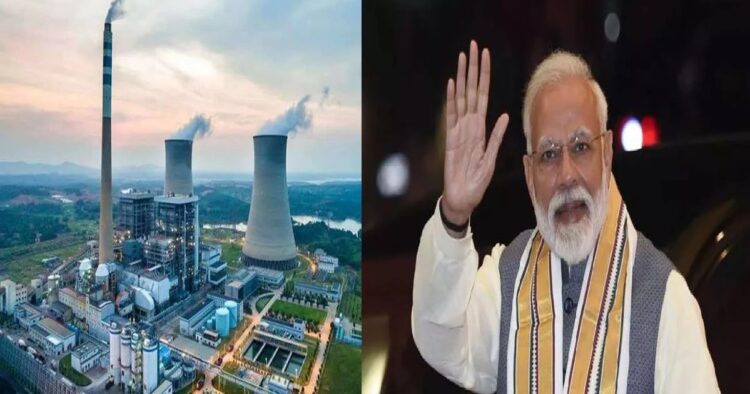Prime Minister Narendra Modi is set to visit Gujarat, his home state, on Thursday to dedicate two new units of the Nuclear Power Corporation of Bharat in Kakrapar. These units, constructed in the Aya Kakrapar Atomic Power Station in Mandvi tehsil of Surat district, mark a significant milestone in India’s nuclear energy program.
The newly inaugurated units, 3 and 4, each boasting a capacity of 700 megawatts, bolster the Kakrapara Atomic Power Station’s total capacity to 1800 MW. This achievement underscores Bharat’s strides towards self-reliance in the nuclear energy sector.
Unit-3, known as the Kakrapar Atomic Power Project (KAPP-3 700 MWe), has been operational since August 30, 2023. It serves as the inaugural unit in a series of 16 indigenous 700 MW Pressurized Heavy Water Reactors (PHWRs) currently in different stages of development. Its counterpart, KAPP-4, is poised to join the grid shortly, further contributing to India’s energy portfolio.
These PHWR units are celebrated for their advanced safety features, a testament to the ingenuity of Indian scientists and engineers. The design, construction, and operation of these reactors showcase India’s capability in realizing the vision of ‘Atmanirbhar Bharat’, or self-reliant Bharat, with resources predominantly sourced from Indian industries.
The Nuclear Power Corporation of India Ltd (NPCIL) currently operates 23 reactors with a combined capacity of 7480 MW. Additionally, 15 reactors utilizing indigenous 700 MW PHWR technology are in different stages of implementation, further underscoring India’s commitment to nuclear energy.
Furthermore, Bharat’s collaboration with Russia in constructing four 1000 MW Light Water Reactors (LWR) at Kudankulam is expected to enhance the country’s nuclear power capacity to 22480 MW by 2031-32. These endeavors signify Bharat’s dedication to diversifying its energy mix while reducing carbon emissions.
In the context of global climate goals, India’s nuclear energy initiatives play a crucial role in curbing emissions. Nuclear power plants have already contributed approximately 870 billion units of clean electricity, mitigating emissions equivalent to about 748 million tonnes of carbon dioxide. This aligns with India’s commitment to achieving net-zero emissions by 2070.
Upon completion, KAPP-3 and 4 are projected to generate approximately 10.4 billion units of clean power per year, assuming a Plant Load Factor (PLF) of 85 per cent. These developments signal a significant stride towards fulfilling Bharat’s energy needs sustainably and reducing its carbon footprint.
India’s participation in global climate summits, such as COP26 in Glasgow in 2021, reflects its commitment to combatting climate change. Through ambitious pledges like the “Panchamrit” pledge, which includes targets like reaching 500 GW of non-fossil electricity capacity and achieving net-zero emissions by 2070, Bharat reaffirms its dedication to a greener, sustainable future.

















Comments